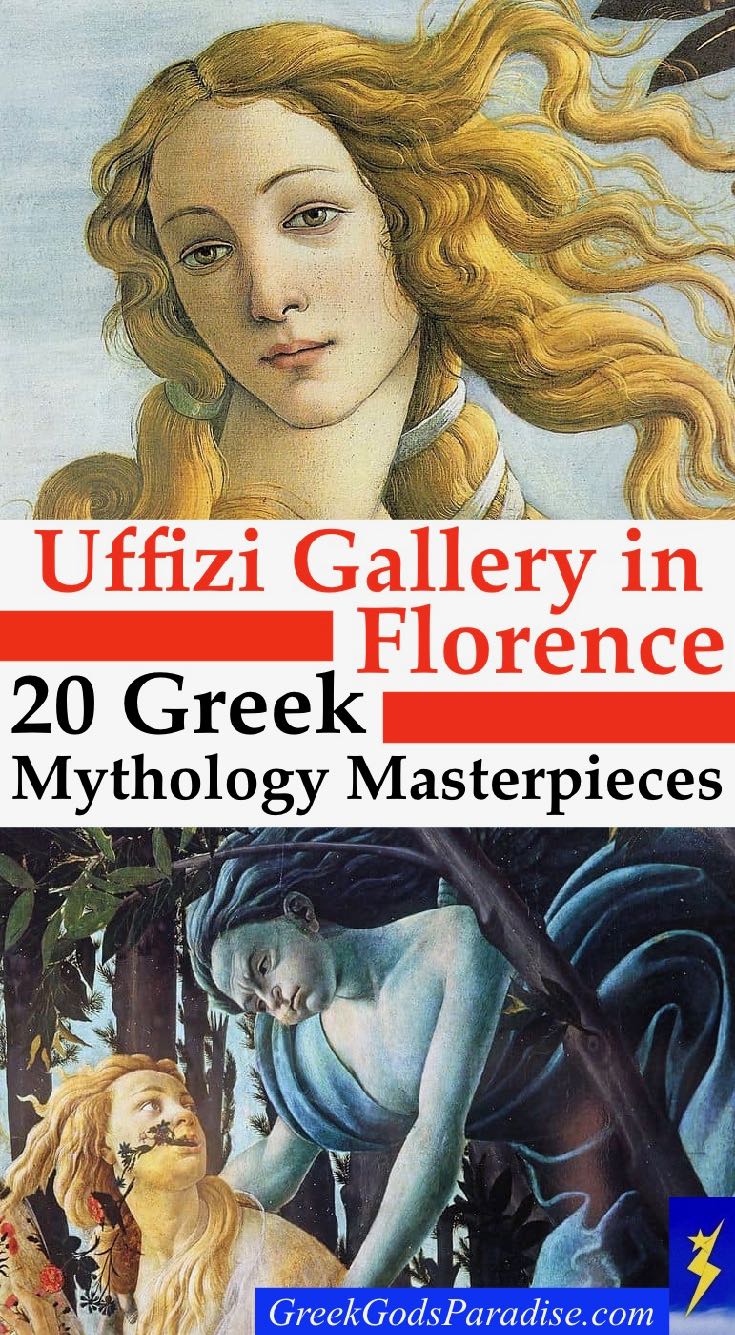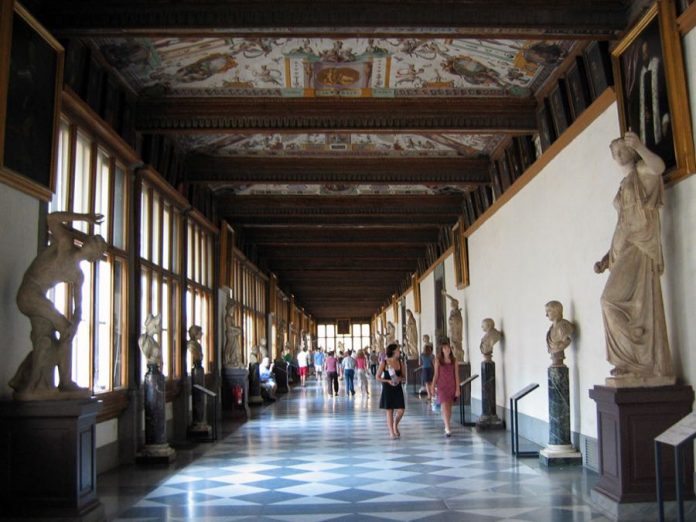
One of Florence’s most famous tourist attractions is the Uffizi Gallery, where you can admire many Greek Mythology masterpieces.
The Uffizi Gallery in Florence is a major drawcard for art lovers worldwide, so you need to wander through the Uffizi Gallery at least once, especially if it is your first time in Florence.
Here’s a guide to some of the 20 most amazing artworks in the Uffizi Gallery.
But first, let’s talk about different ways to get to the Uffizi Gallery.
How to get to the Uffizi Gallery (2 good options):
Palazzo Vecchio (Hercules) to the Uffizi Gallery
First, you’ll need to find Hercules in Palazzo Vecchio, next to Piazza della Signoria, Florence’s main square.
The white marble statue showing Hercules and Cacus can’t be missed.
The Uffizi Gallery is located just off of Piazza della Signoria, next to Palazzo Vecchio, where you’ll also find a marble replica of Michelangelo’s David close to Hercules.

From there, twist your head to the right, where you’ll see Perseus holding up Medusa’s head.
You can see this amazing Greek mythology artwork within the Loggia dei Lanzi, which is in close proximity to Hercules in Palazzo Vecchio.

Walk between Hercules and Medusa towards the Uffizi Gallery (seen on the right side) in the picture below.
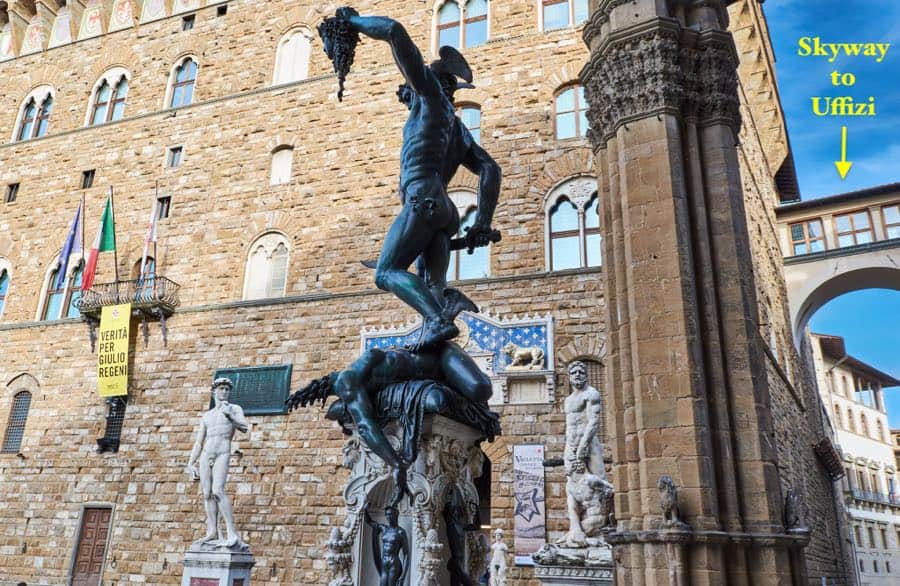
Hercules will be on your left, and Medusa will be on your right as you walk into the U-shaped Uffizi Gallery.
Keep walking for a little while, then turn around and look at Hercules again.
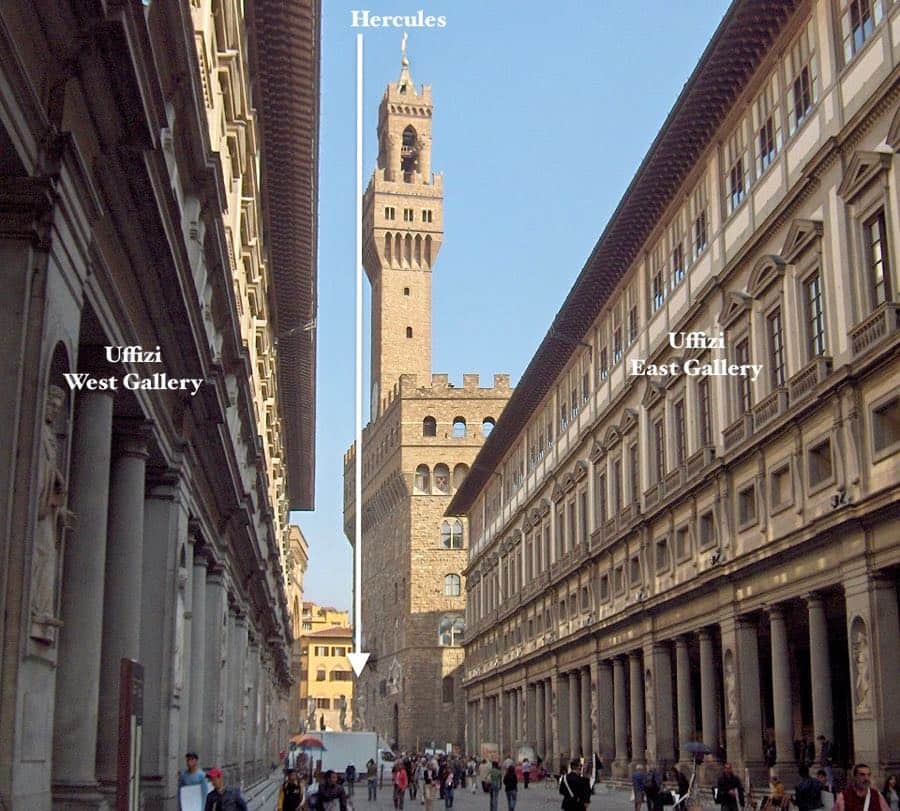
The place where you would have been walking is called Piazzale degli Uffizi.
On each side of the courtyard, you can find statue portraits of some of the greatest people of Florence.
The Uffizi Gallery Building
Keep on walking towards the archway at the end of the courtyard, and soon you’ll be under the Uffizi’s south gallery. The Arno river is on the other side of the archway.
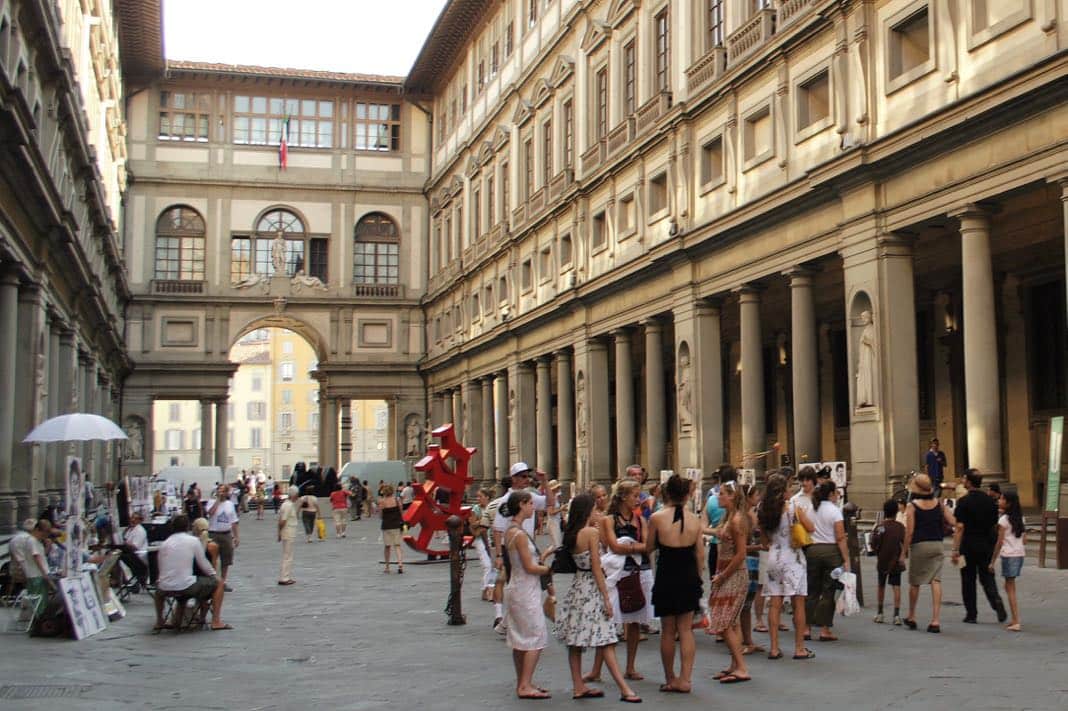
The Uffizi Gallery is one long U-shaped building, which can be seen on the map below. It is in Piazzale degli Uffizi, between Piazza Signoria and the River Arno.
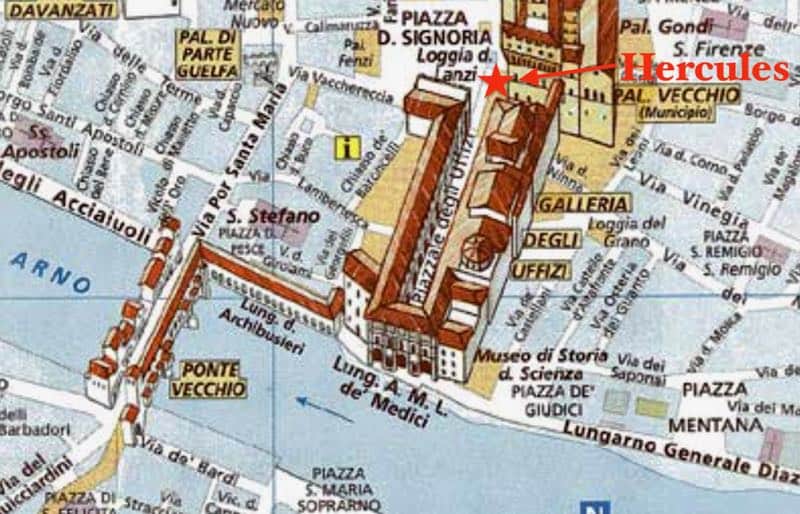
The outside southern section of the Uffizi Gallery building faces the Arno river.
Looking out of the building through the open windows on a higher floor, you can see the famous Ponte Vecchio bridge (on the right), a top-rated photo opportunity.

After that, find an entry door to the Uffizi Gallery, which you would have noticed along the way.
Ponte Vecchio bridge to the Uffizi Gallery
If you’re on the other side of the Arno river, the easiest way to get to the Uffizi Gallery is by walking across Florence’s famous Ponte Vecchio bridge.
This spectacular bridge is a true landmark of the city of Florence.
Walking through the city-like street on Ponte Vecchio bridge is memorable because it is filled with gold jewelry stores and food outlets on either side.
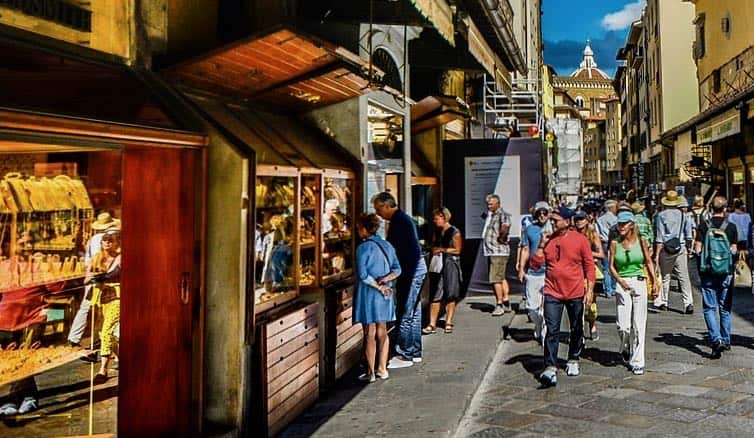
The Uffizi Gallery is only a short stroll away from Ponte Vecchio.
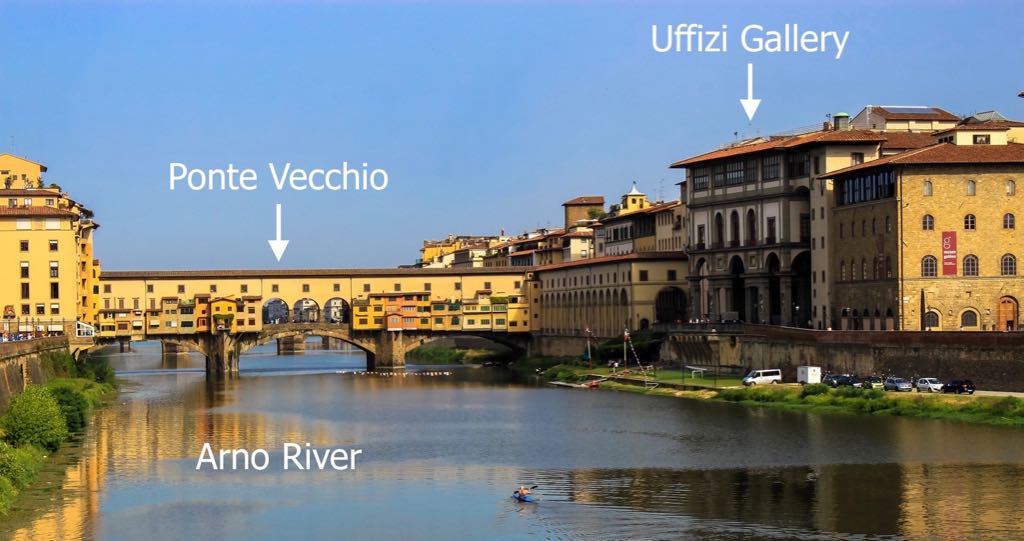
So there you have it; this intro gives first-time visitors a good idea of where you’re headed.
I had no idea where I was in Florence. When you’re part of a tour group, it’s tough to appreciate where you are since you’re mostly following the tour guide around and buses take you everywhere, so it’s very easy to lose your sense of direction.
The view from Piazza Michelangelo probably offers the best views in Florence.

Fantastic views can be seen from this spot.
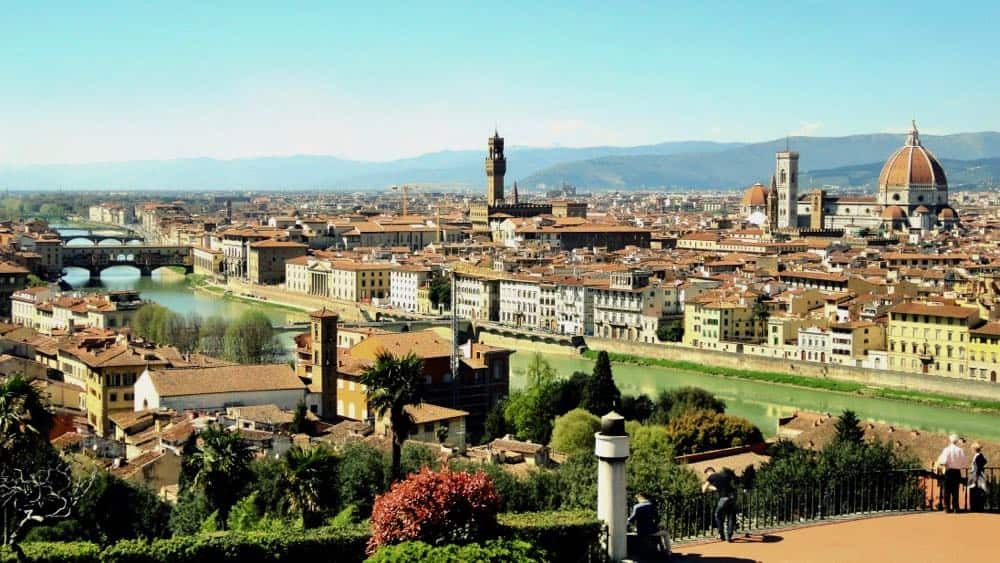
Here I am in Florence for a group photo at Piazza Michelangelo during a London to Athens tour.
I’m the third guy on the right, close to the guy in the blue shirt. I had no idea of where I was at the time.
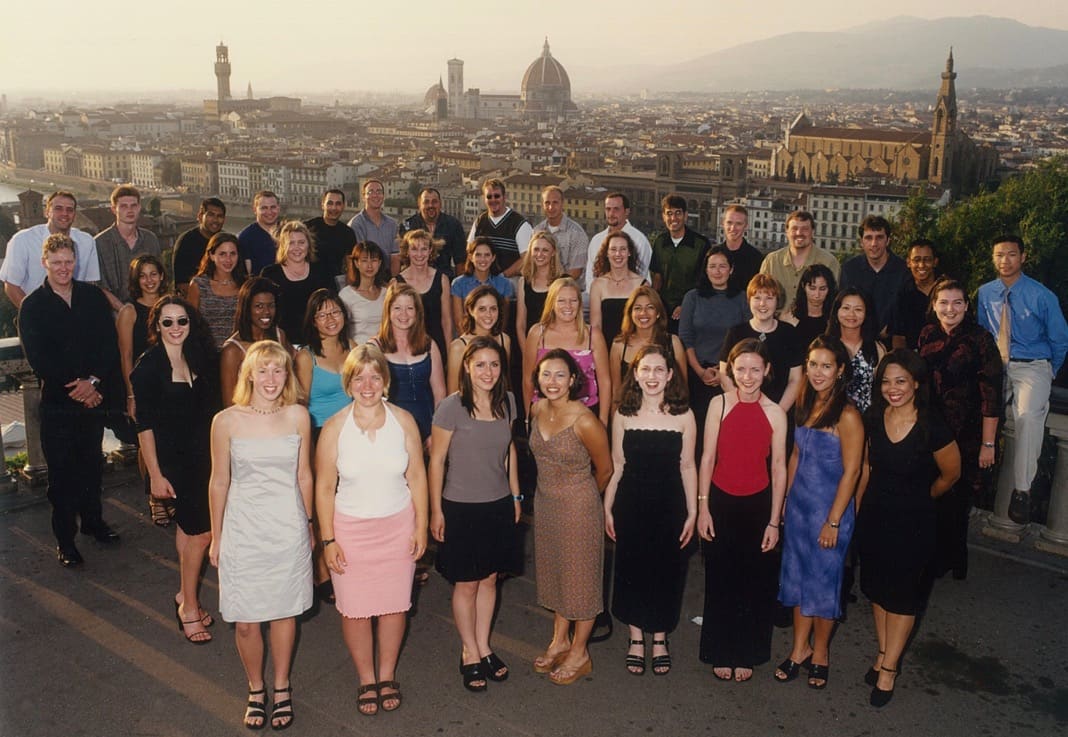
Tips for visiting the Uffizi Gallery
- Reserve tickets before you go. Book your ticket online or call the reservation desk. Do whatever it takes. There is no point in wasting any time standing in a queue. It can take a long time to get in, especially during the peak season in summer. Book your tickets before you go or go on a guided tour.
- The Uffizi Gallery is generally open Tuesday through Sunday from 8:15 am to 6:50 pm. It’s closed on Mondays. You don’t want to rock up on a Monday when it’s closed.
- Make sure you visit the rooftop terrace on the Uffizi for some great open-air views. There is also a rooftop cafe.
Special Treat – Vasari Corridor (for the lucky few)
- Book a private tour through the Vasari Corridor. This highlight has to be pre-arranged (only accessible via guided tour). Keep in mind it isn’t open to visitors all year round. Make sure it’s an English-speaking guide if you don’t understand Italian. The Vasari Corridor (Italian: Corridoio Vasariano) is a kilometer-long elevated enclosed passageway that connects Palazzo Vecchio (Old Palace) and Uffizi with the Palazzo Pitti (Pitti Palace). The Medici built it, so they didn’t have to mingle with the riffraff. In addition, it provided a private safe route for the Medicis to move between the seat of the government (Palazzo Vecchio), the Uffizi, and their former home (Pitti Palace) on the other side of the river. Self-portraits of artists and other artworks date from the 17th to the 20th century. I wish I had known about it when I was in Florence.
History of the Uffizi Gallery
Florence’s most famous gallery, the Uffizi Gallery, was initially used as an administrative building, called ‘The Offices.’
The word ‘office’ developed from ‘Uffizi.’ Uffizi means ‘palace of offices.’
The Uffizi is laid out chronologically across 45 rooms, mainly over a single floor.
It holds the highest concentration of Renaissance art in the world, including works by Botticelli, Leonardo, Raphael, and Michelangelo.
The collection was bequeathed to the people of Florence in perpetuity in 1737 by Anna Maria Ludovica, the last of the Medici dynasty.
In 1769 the gallery was finally opened to the public. Here are the best Greek mythology masterpieces I am aware of.
The Uffizi Gallery Masterpieces:
1. Medusa
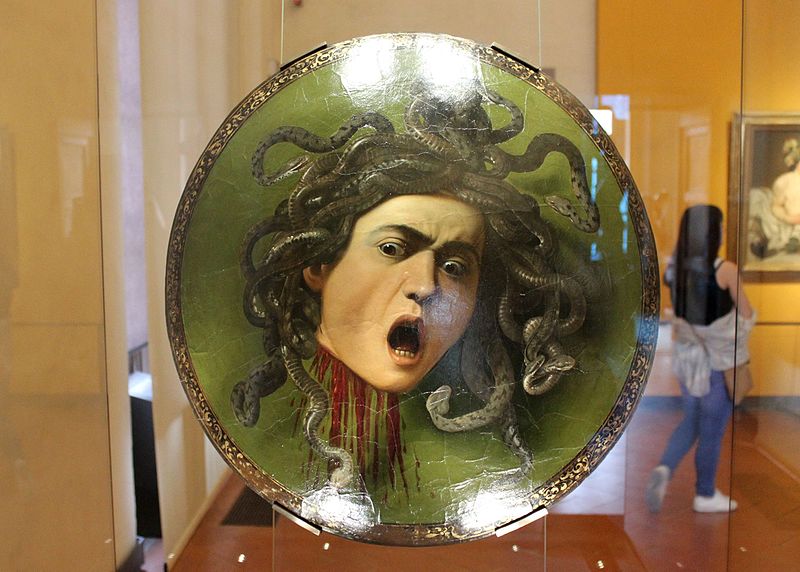
Artist: Michelangelo Merisi dal Caravaggio
According to the myth, Medusa’s face is Caravaggio’s self-portrait when he was younger.
Whatever the truth is, this is a particularly terrifying image on a real round shield.
The head of the shocked Gorgon is freshly severed. Blood can be seen gushing out when Medusa catches sight of herself in Perseus’ mirror shield.
2. Hercules and Nessus
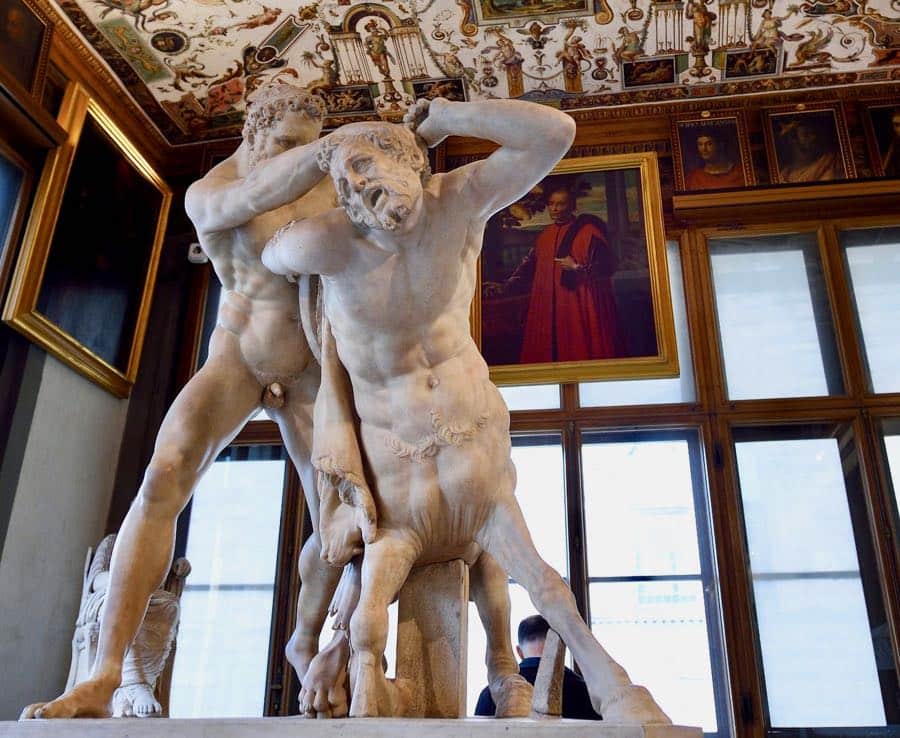
3. Head of Medusa

Artist: Unknown Master, possibly Flemish (active in the 16th century)
4. Laocoön and his Sons
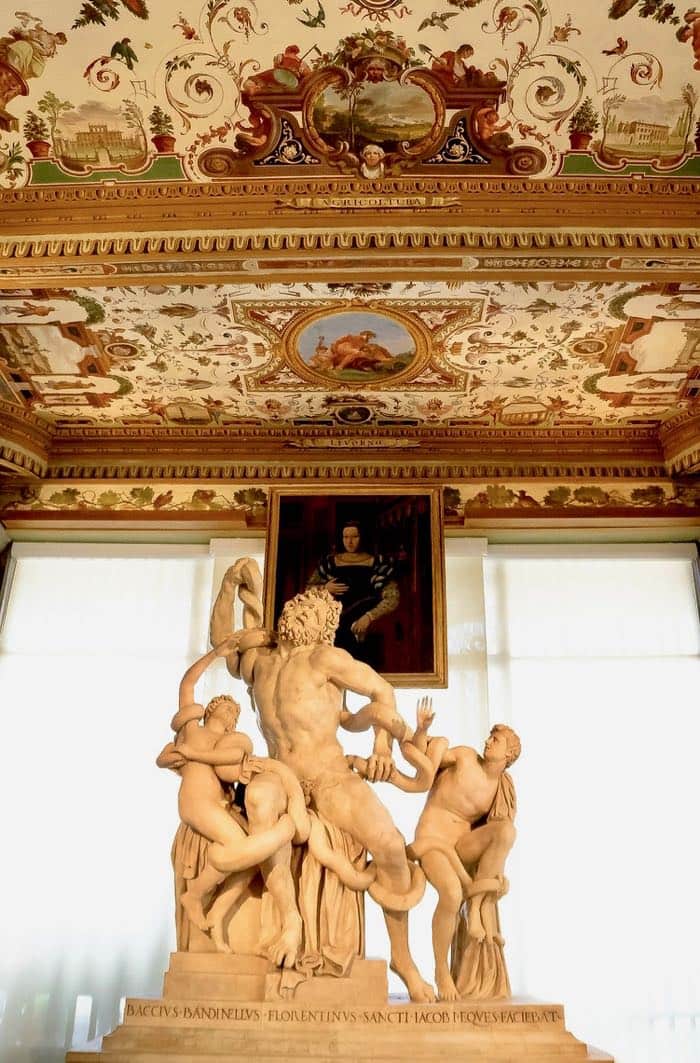
This is a copy of the one in the Vatican, proving that the Greek Gods are cruel.
5. The Birth of Venus
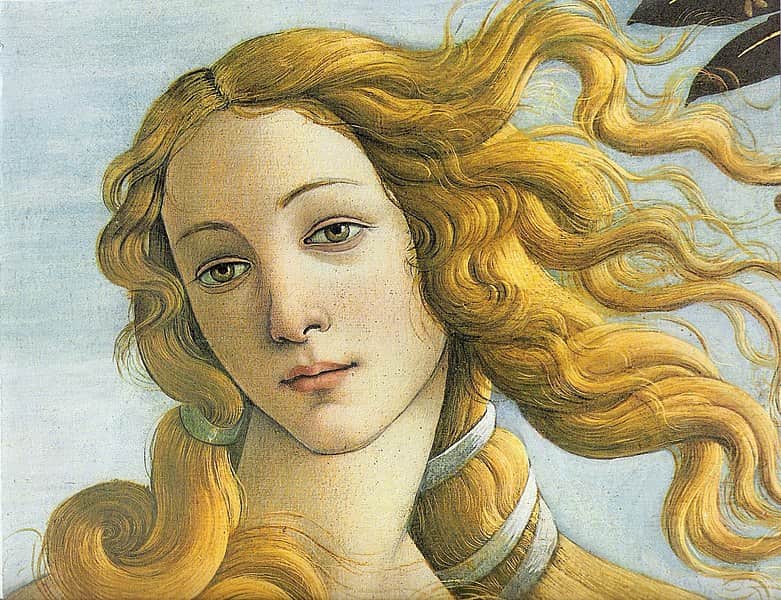
Watch the video below to gain a better artistic understanding of this masterpiece.
The Birth of Venus is the most famous and beloved painting in the Uffizi Gallery.
Artist: Botticelli
Zephyr and Aura blow Venus gently onto the shore with a rain of roses.
A girl (maybe one of the mythological figures called “Horae” or “Hours”) waits for the Goddess in readiness to dress her.
6. Perseus rescuing Andromeda

I would never have imagined the beast to have looked like this. It almost looks friendly.
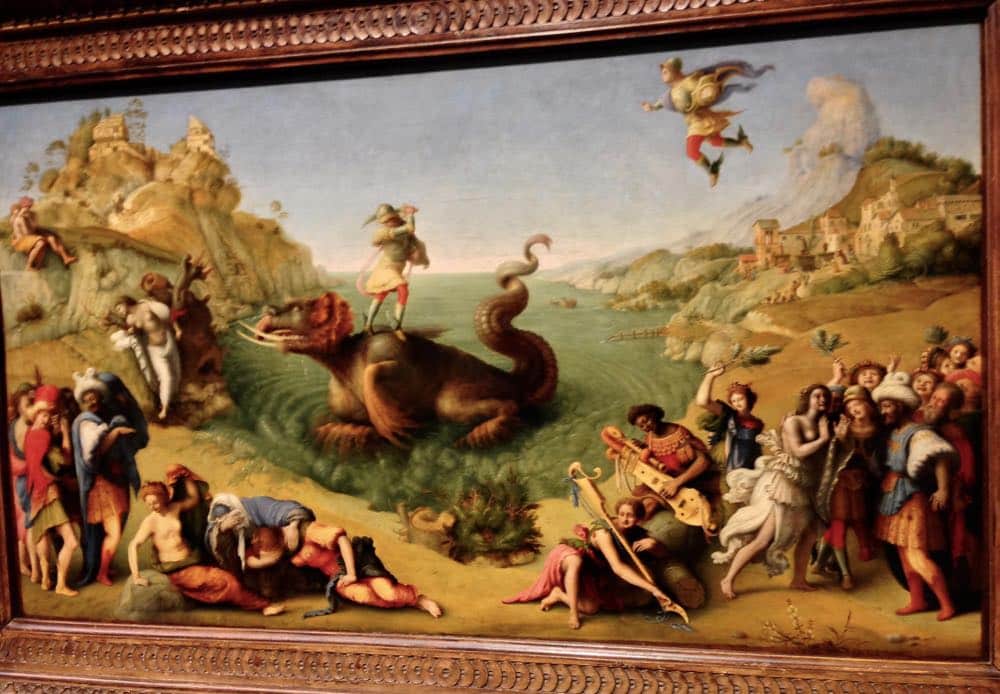
7. Venus de Medici

The Tribune of the Uffizi (an octagonal hall) contained the most prized possessions of ancient Classical Greek & Roman sculptures and High Renaissance paintings from the Medici collection.
The majestic-looking room has three different entries.
Amazingly, the Venus statue in this room at one time was the biggest drawcard to the Uffizi Gallery.
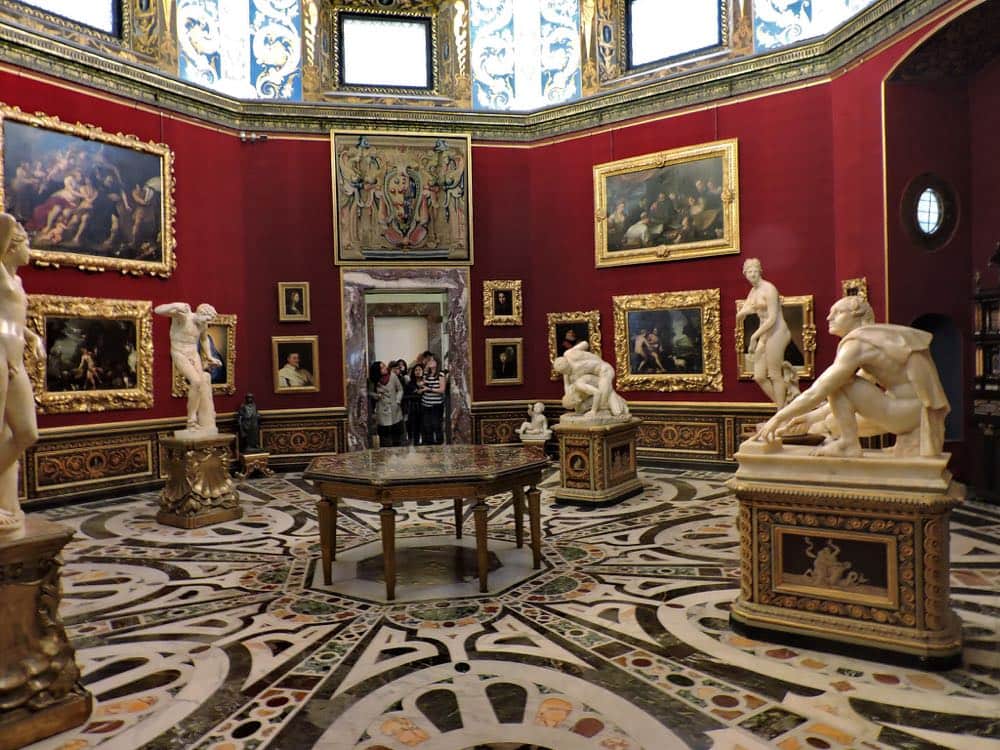
8. Hercules and the Hydra
- Painting of Hercules and the Hyrda (left side)
- One of the scenes from a sarcophagus depicting the labors of Hercules (right side)

For anyone interested, here are the best Hercules movies.
9. Niobe room
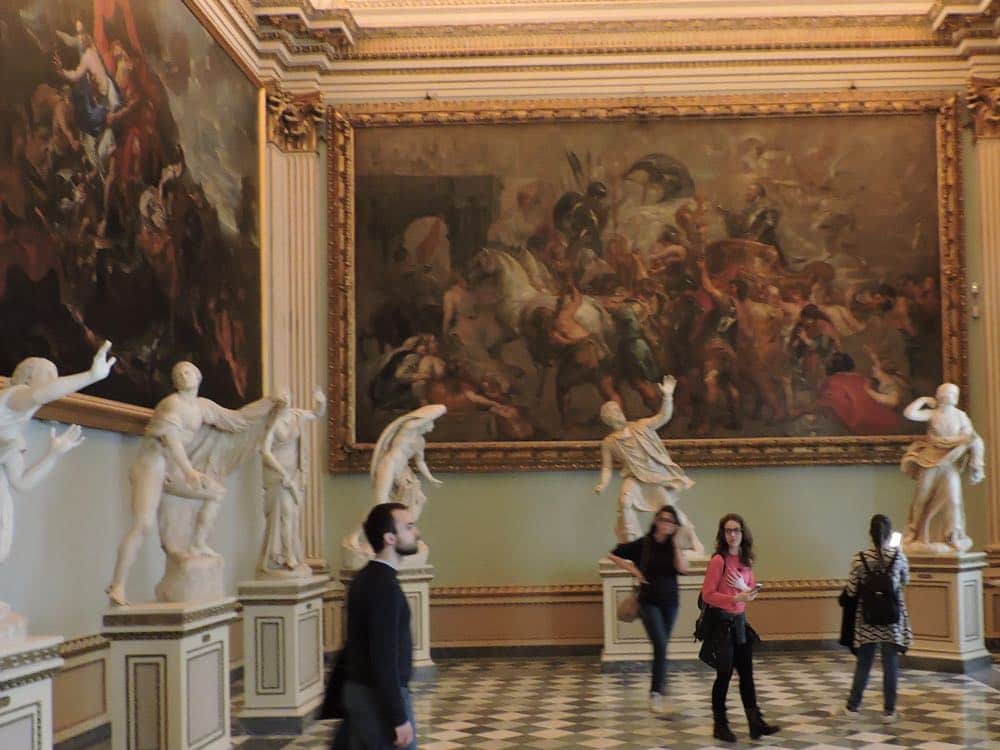
Watch this interesting video below, and be scared.
The Weeping Rock is located in Mount Sipylus, Manisa, Turkey. It’s known as Niobe’s Rock because it resembles the shape of a weeping woman.
Ancient Greeks believed this to be Niobe, one of the more tragic figures in Greek mythology.
Niobe and Amphion had fourteen children (the Niobids). In a moment of arrogance, Niobe bragged about her seven sons and seven daughters at a ceremony in honor of Leto.
She mocked Leto, who only had two children, even though her children were Apollo, God of prophecy and music, and Artemis, virgin Goddess of the wild. Bad, bad, bad, bad mistake.
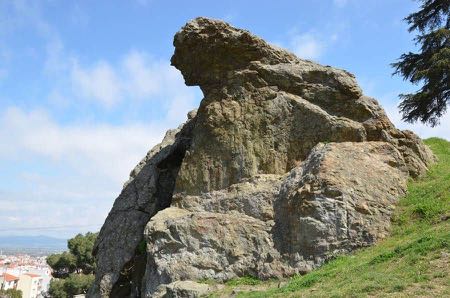
“Somewhere in the rocks in Sipylus, among the lonely mountains,
where, men say, goddess nymphs lie down to sleep,
the ones that dance beside the Achelous,
there Niobe, though turned to stone, still broods,
thinking of the pain the gods have given her.”
[Homer, Iliad, 24.614-617; tr. Ian Johnston.]
10. Calumny of Apelles

A closeup of King Midas with the ears of a donkey.
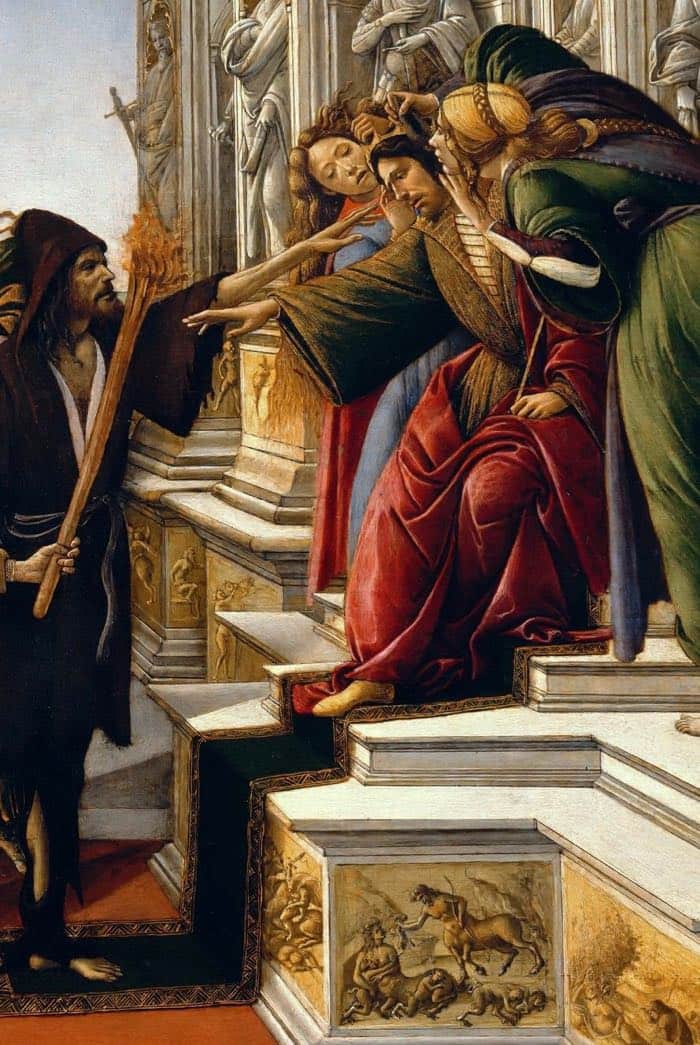
11. Leda and the Swan
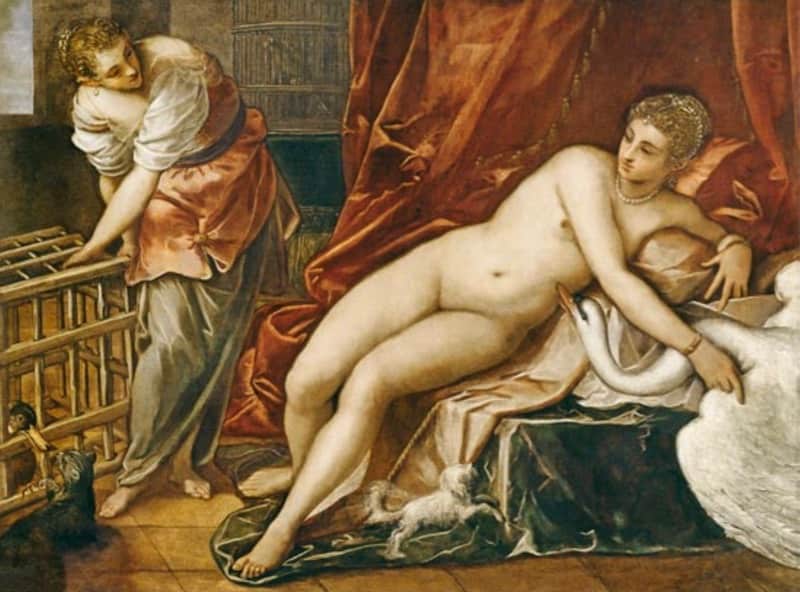
12. Venus of Urbino
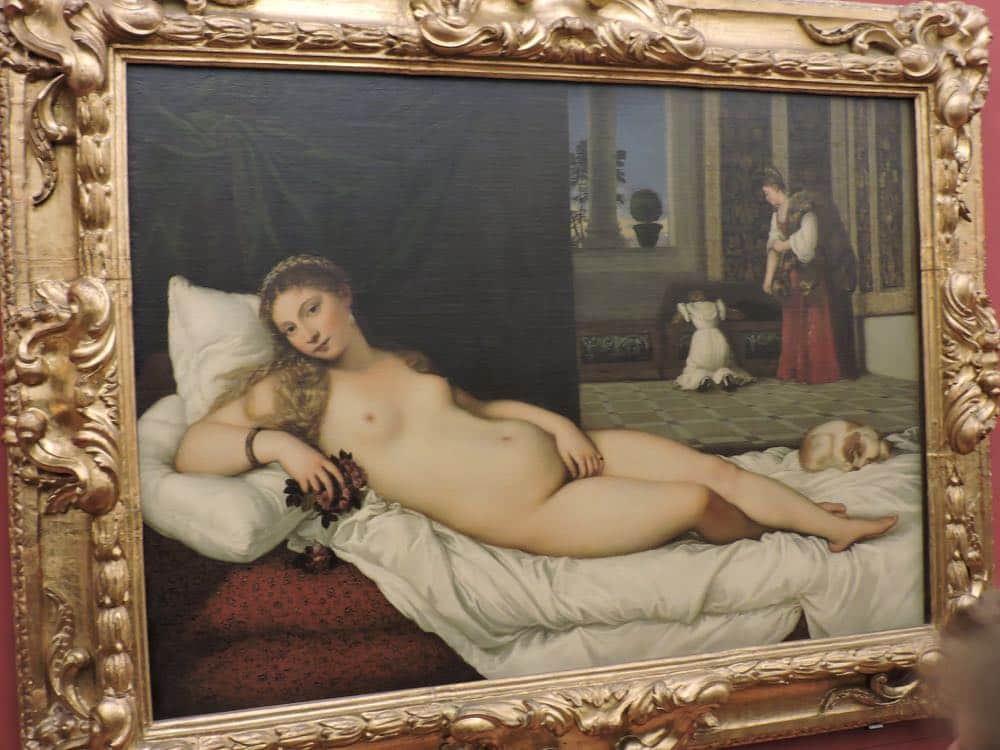
13. Centaurs
- Achilles and the Centaur Chiron [The Education of Achilles] (left)
- Pallas and the Centaur (right)
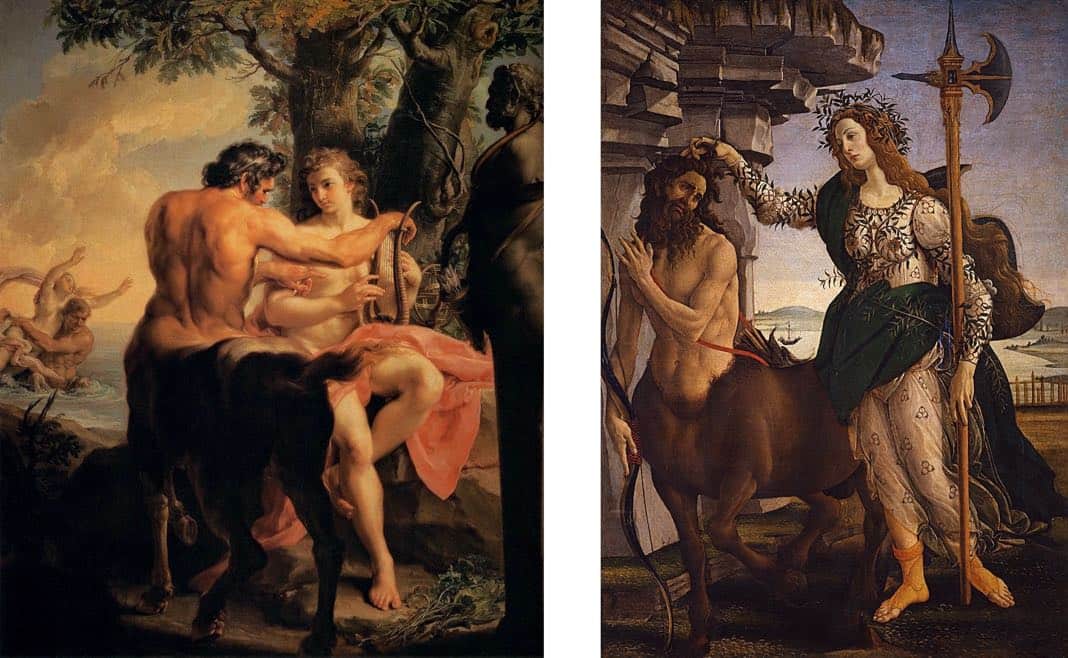
14. Vulcan’s Forge
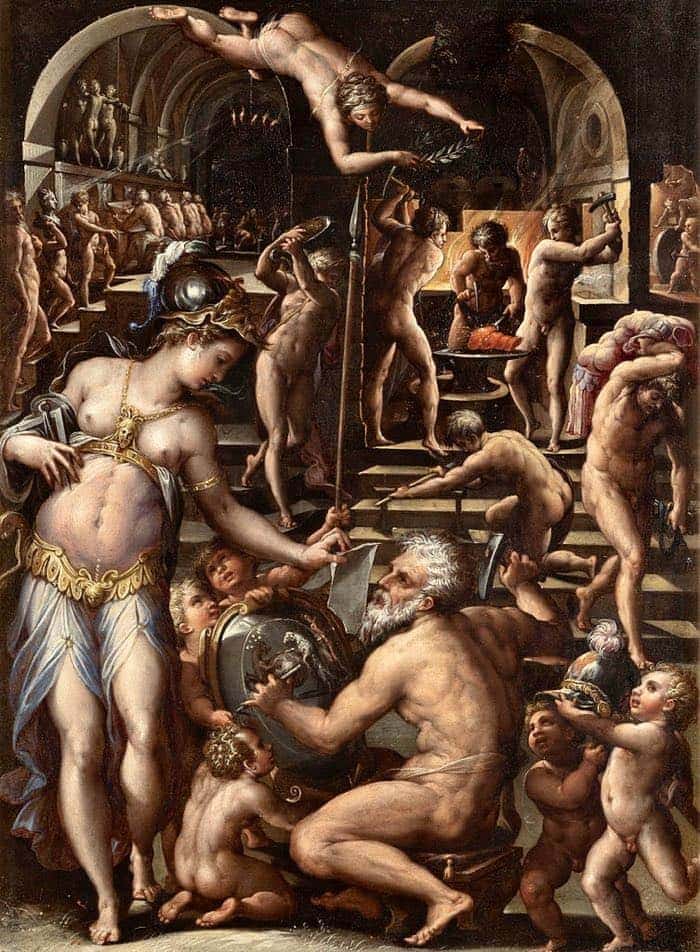
Hephaestus (Vulcan) was always working.
15. Eros
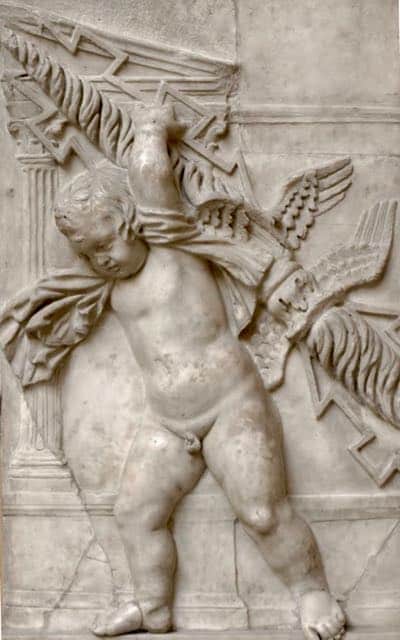
Eros holding the thunderbolts of Zeus.
16. Mercury and Herse
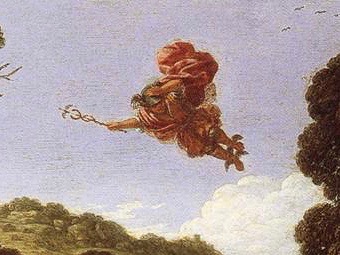
The painting is a reminder of the story of Mercury and Herse.
Greek God, Hermes (Mercury), is identified by his winged feet, helmet, and caduceus.
When he spies on three sisters returning from the festival of Minerva, Hermes falls in love with Herse, the most beautiful of the three sisters.
Herse’s sister Aglauros becomes envious of Mercury’s infatuation with Herse.
She attempts to intervene. However, it ends tragically with Mercury turning her to stone. In this picture, we see Mercury when he first spots Herse.
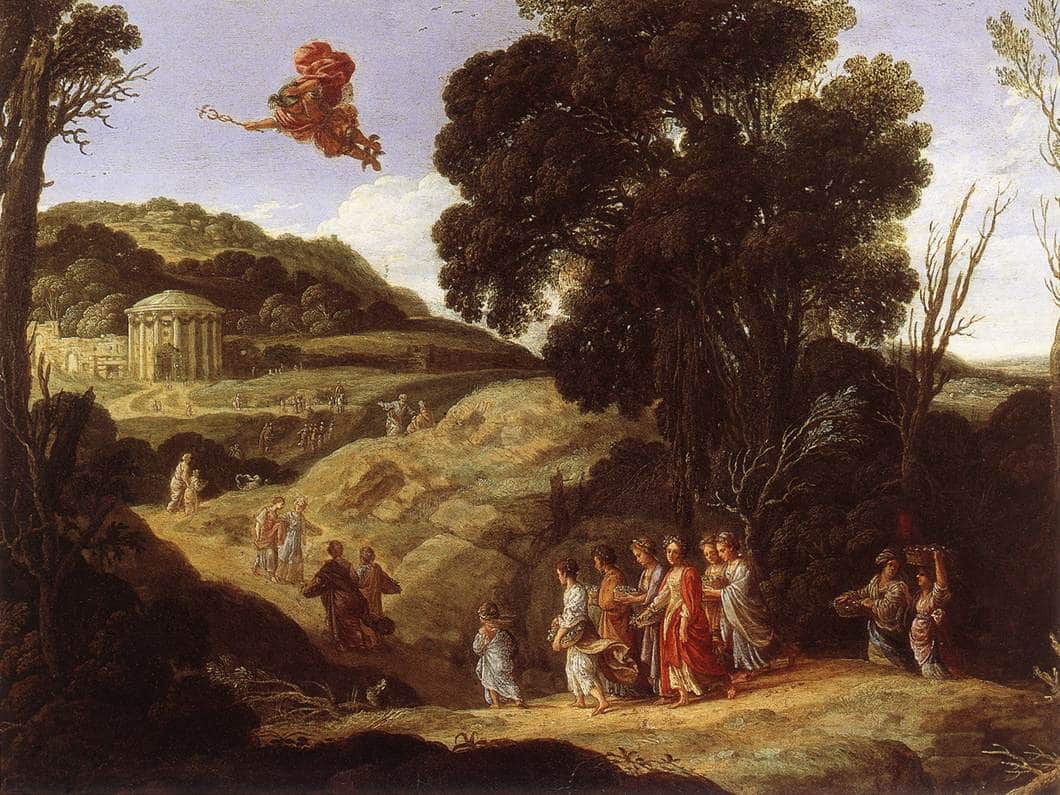
17. Secret Images

Secret images appear on the back of these two individual portraits.
You can walk behind the paintings and see the pictures for yourself. The browny-colored images stand out a bit better in black and white, as shown below.
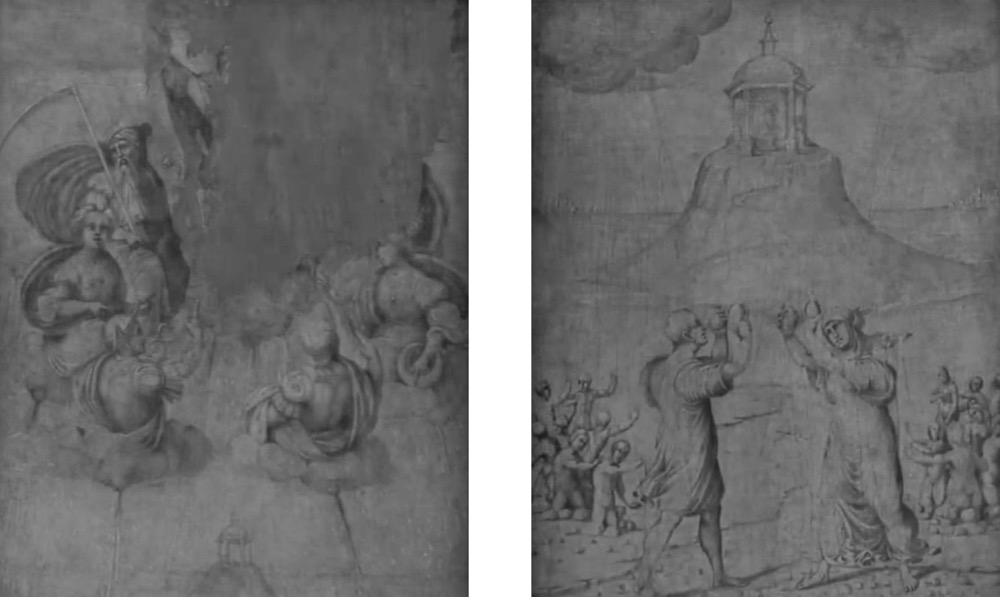
On the back of a portrait of Maddalena (shown on the right), we see the continuation of the flood story, “the Revival of the human race.”
After the flood, the only survivors are Deucalion (the son of Prometheus) and his wife Pyrrha.
In obedience to the orders of the Oracle, they throw stones on the ground, raising new humans.
18. Pan and Nymph
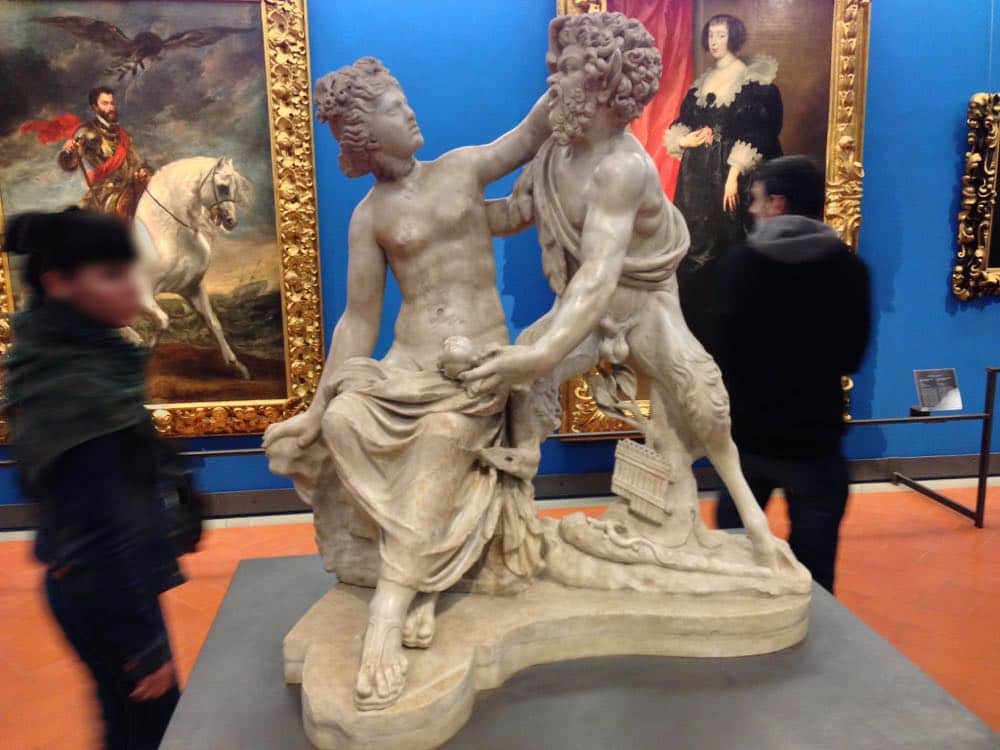
19. Amore e Psiche (Cupid and Psyche)
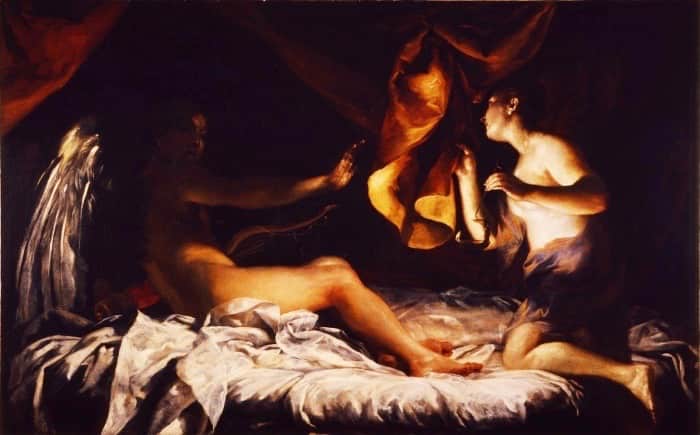
Artist: Giuseppe Maria Crespi
Psyche looks upon Cupid for the first time.
This is one of the most famous love stories in Greek mythology.
20. La Primavera (The Allegory of Spring)
The Three Graces represent the feminine virtues of Chastity, Beauty, and Love.
Next to them is the Goddess Venus, who protects and cares for the institution of marriage.
Above her is her son, Cupid. He shoots his arrows of love while blindfolded towards the Three Graces.
The Three Graces also represent the three kinds of love, sacred love, biological love, and platonic love.
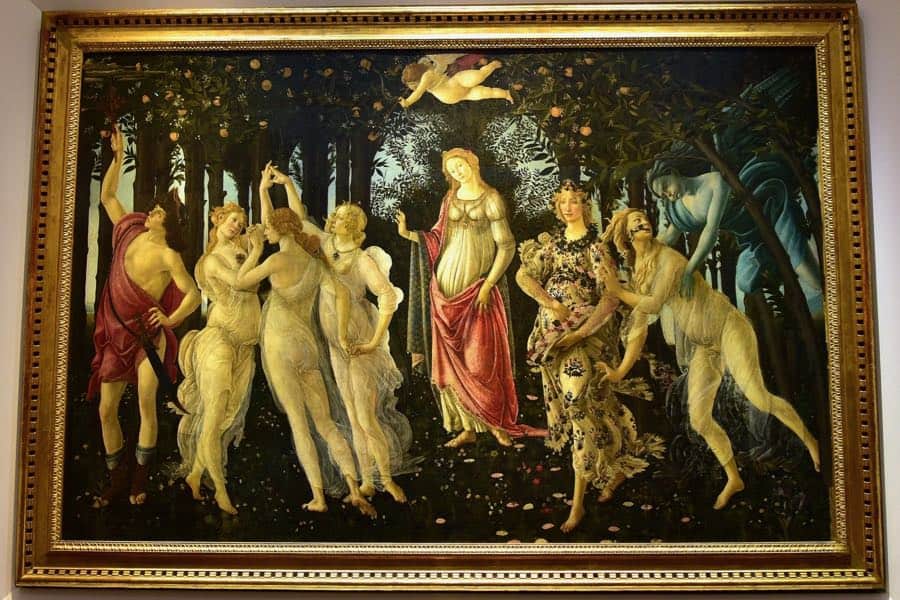
On the far right of the painting, we see the bluish Zephyr, the west wind, pursuing the nymph named Chloris.
After he reaches her, Chloris transforms into Flora, the Goddess of spring.
She’s also a goddess to the city of Florence, which her name seems to suggest.

Transformation is alluded to by the flowers coming out of Chloris’s mouth.
Flora scatters the flowers gathered on her dress, symbolizing springtime and fertility.
La Primavera Music Video
You need to watch/listen to the music video below – La Primavera.
Art in Italy
The Uffizi Gallery in Florence has many great Greek and Roman mythology reminders.
For more fantastic artwork in Italy, check out 10 Places in Italy to see Paintings of the Roman and Greek Gods.
You can also see many amazing Neptune Fountains in Italy, dedicated to the God of the sea.
Pin it … Share it
